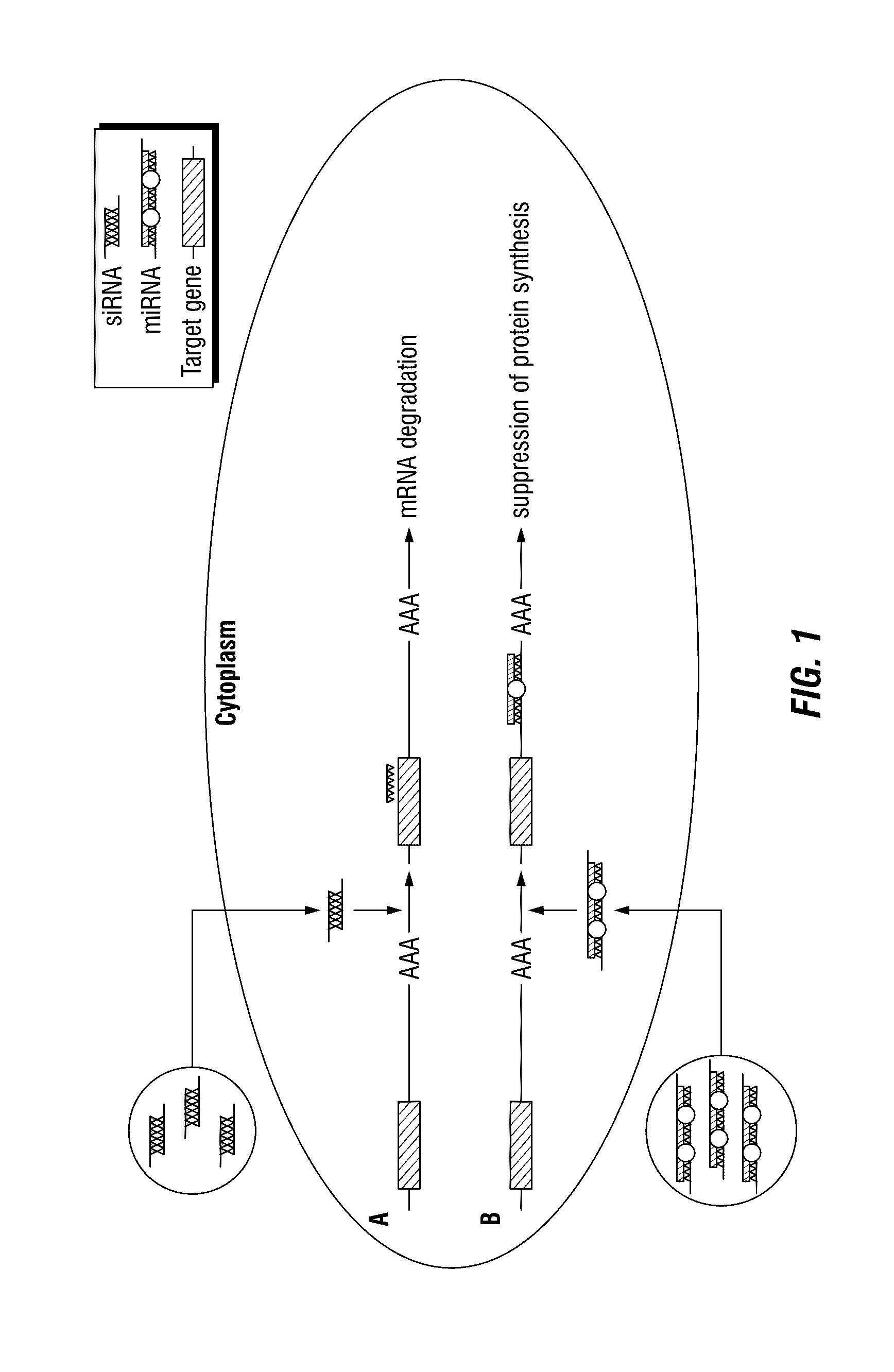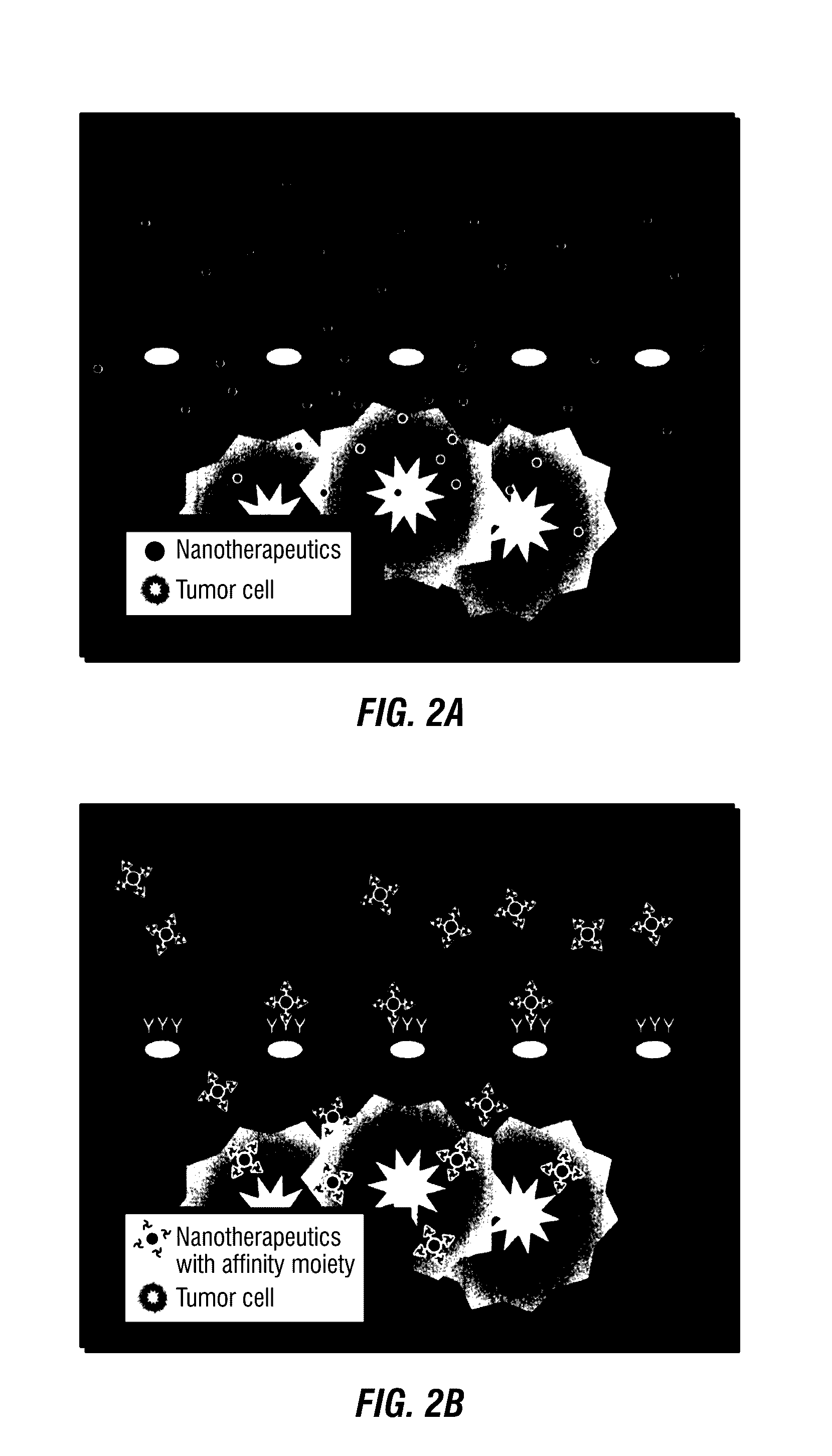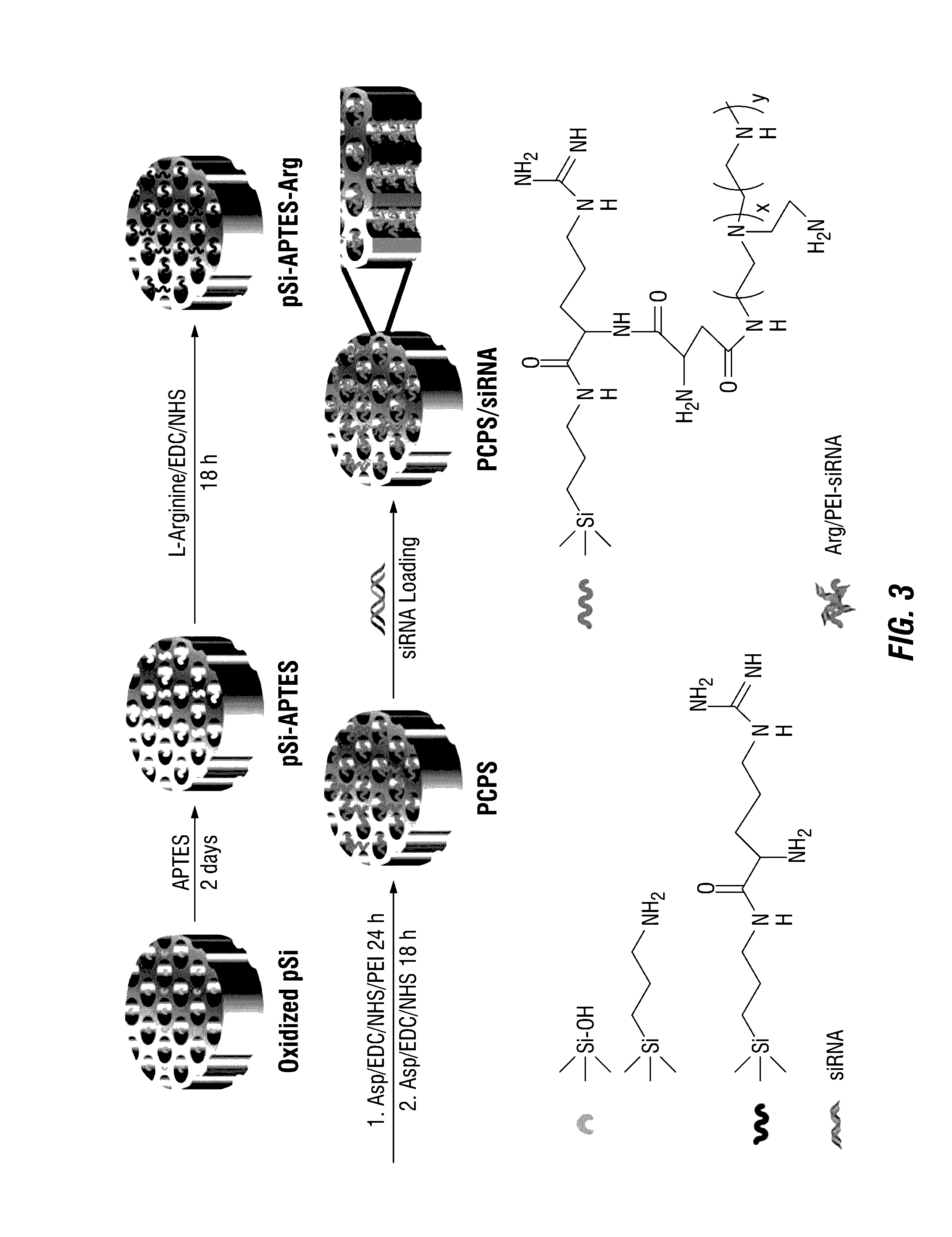Polycation-functionalized nanoporous silicon carrier for systemic delivery of gene silencing agents
a technology of polycation and nanoporous silicon, applied in the field of nanomedicine and pharmacology, can solve the problems of toxicity, drug-related or therapy-induced toxicity, and the delivery of active agents is the numerous biological barriers within the body that must be traversed, so as to reduce the total amount of porous silicon, less toxicity, and no significant loss of activity or efficacy
- Summary
- Abstract
- Description
- Claims
- Application Information
AI Technical Summary
Benefits of technology
Problems solved by technology
Method used
Image
Examples
example 1
High Capacity Nanoporous Silicon Carrier for Systemic Delivery of Gene Silencing Therapeutics
[0217]Drug development has traditionally been focused on a limited number of targets such as enzymes, transporters, G-protein-coupled receptors, and secreted proteins (Makley and Gestwicki, 2013). Most gene products are deemed as nondruggable since it is difficult to develop assays to measure their activities, and hence to carry out drug screening. As a result, many important proteins have been excluded from drug development efforts. This is especially true for cancer drug development. Many key cancer-causing genes encode transcription factors and these involved in protein-protein interaction (Suzuki et al., 2002; Li et al., 1999; Schlabach et al., 2008). The discovery of RNA interference (RNAi) has opened the door for the development of a new class of therapeutic agents for the treatment of human diseases (Fire et al., 1998). RNAi is considered to have the capability of knocking down any ge...
example 2
Polycation-Functionalized Nanoporous Silicon Particles for Gene Silencing on Breast Cancer Cells
[0284]FIG. 10A illustrates the synthesis and surface modification of mesoporous silicon nanoparticles (MSNP). FIG. 10B shows an agarose gel electrophoresis of exemplary PEI-Phos-MSNP particles containing siRNAs prepared as described below. siRNA oligos (0.2 μg) were incubated with increasing amount of PEI-Phos-MSNP particles. They were then applied to electrophoresis in agarose gels. When the PEI-Phos-MSNP-to-siRNA ratio was greater than 5, all siRNA oligos remained with the particles in the gel loading well, which indicated tight binding.
[0285]FIG. 11A, FIG. 11B, FIG. 11C, FIG. 11D, and FIG. 11E show the characterization of exemplary MSNP. Shown are the changes in surface charge (FIG. 11A) and images of the MSNP particles (FIG. 11B, FIG. 11C, FIG. 11D, and FIG. 11E) during chemical modification. FIG. 11A shows the changes in surface charges determined based on zeta potential during diffe...
PUM
| Property | Measurement | Unit |
|---|---|---|
| Temperature | aaaaa | aaaaa |
| Temperature | aaaaa | aaaaa |
| Time | aaaaa | aaaaa |
Abstract
Description
Claims
Application Information
 Login to View More
Login to View More - R&D
- Intellectual Property
- Life Sciences
- Materials
- Tech Scout
- Unparalleled Data Quality
- Higher Quality Content
- 60% Fewer Hallucinations
Browse by: Latest US Patents, China's latest patents, Technical Efficacy Thesaurus, Application Domain, Technology Topic, Popular Technical Reports.
© 2025 PatSnap. All rights reserved.Legal|Privacy policy|Modern Slavery Act Transparency Statement|Sitemap|About US| Contact US: help@patsnap.com



